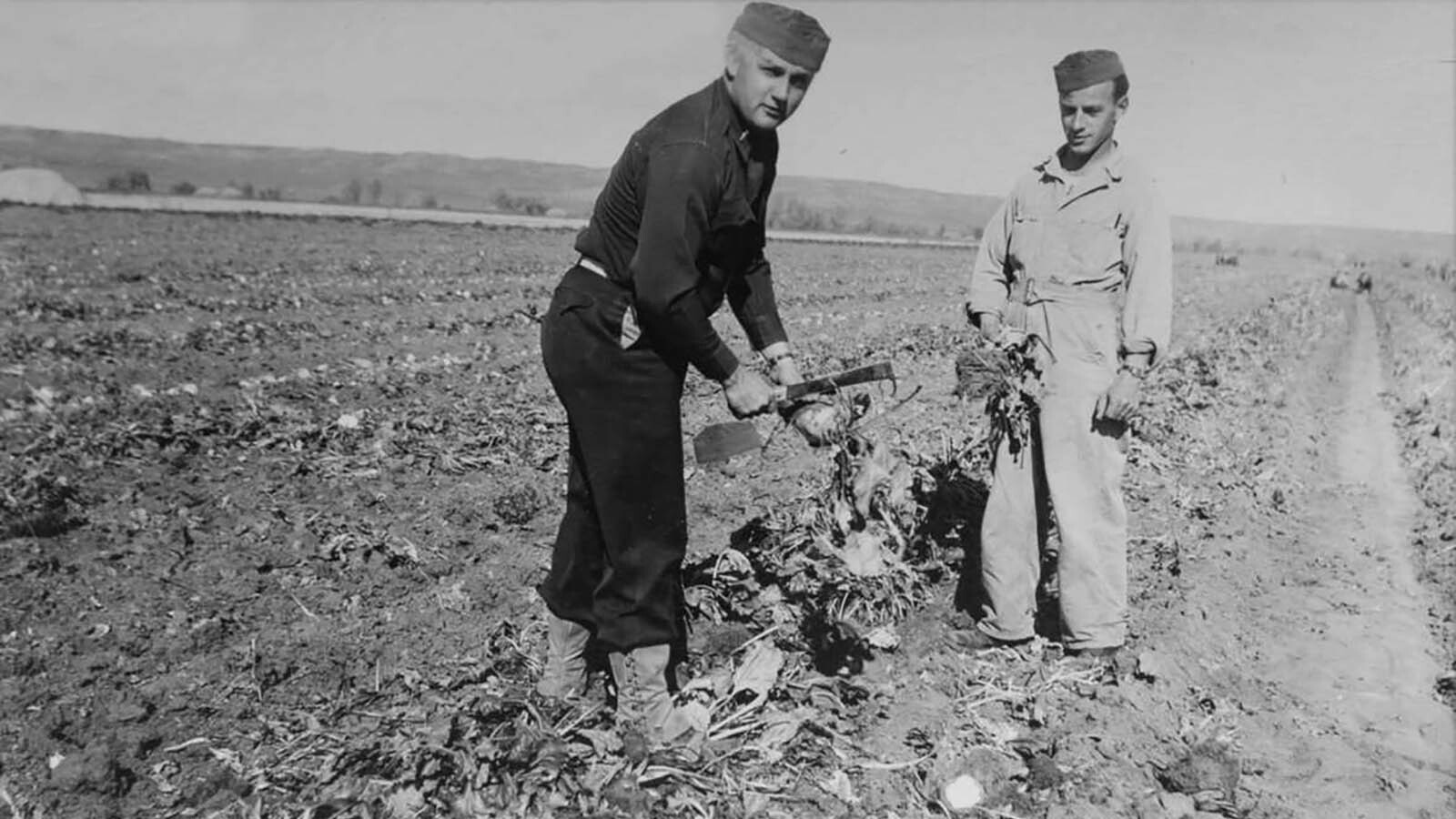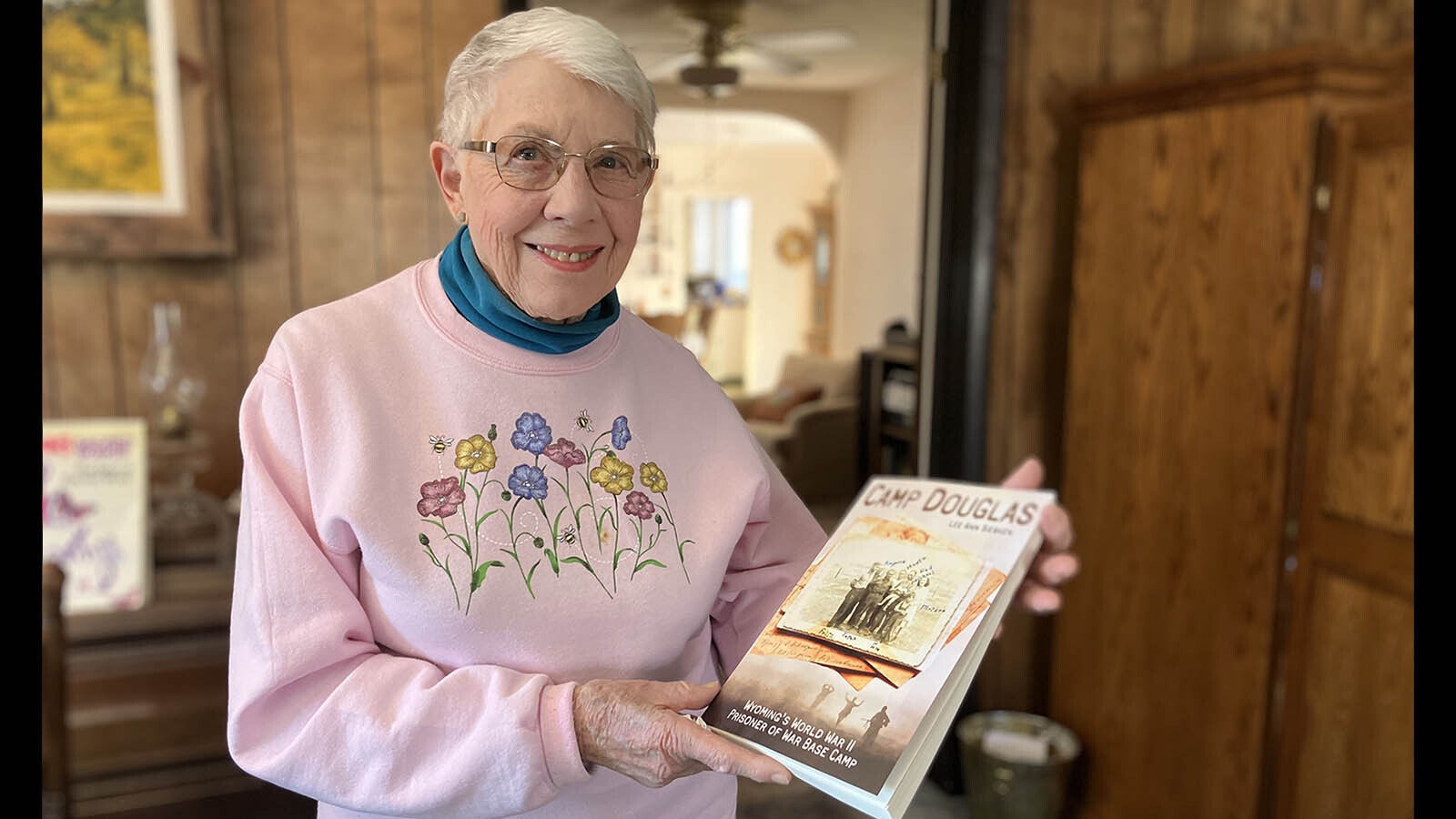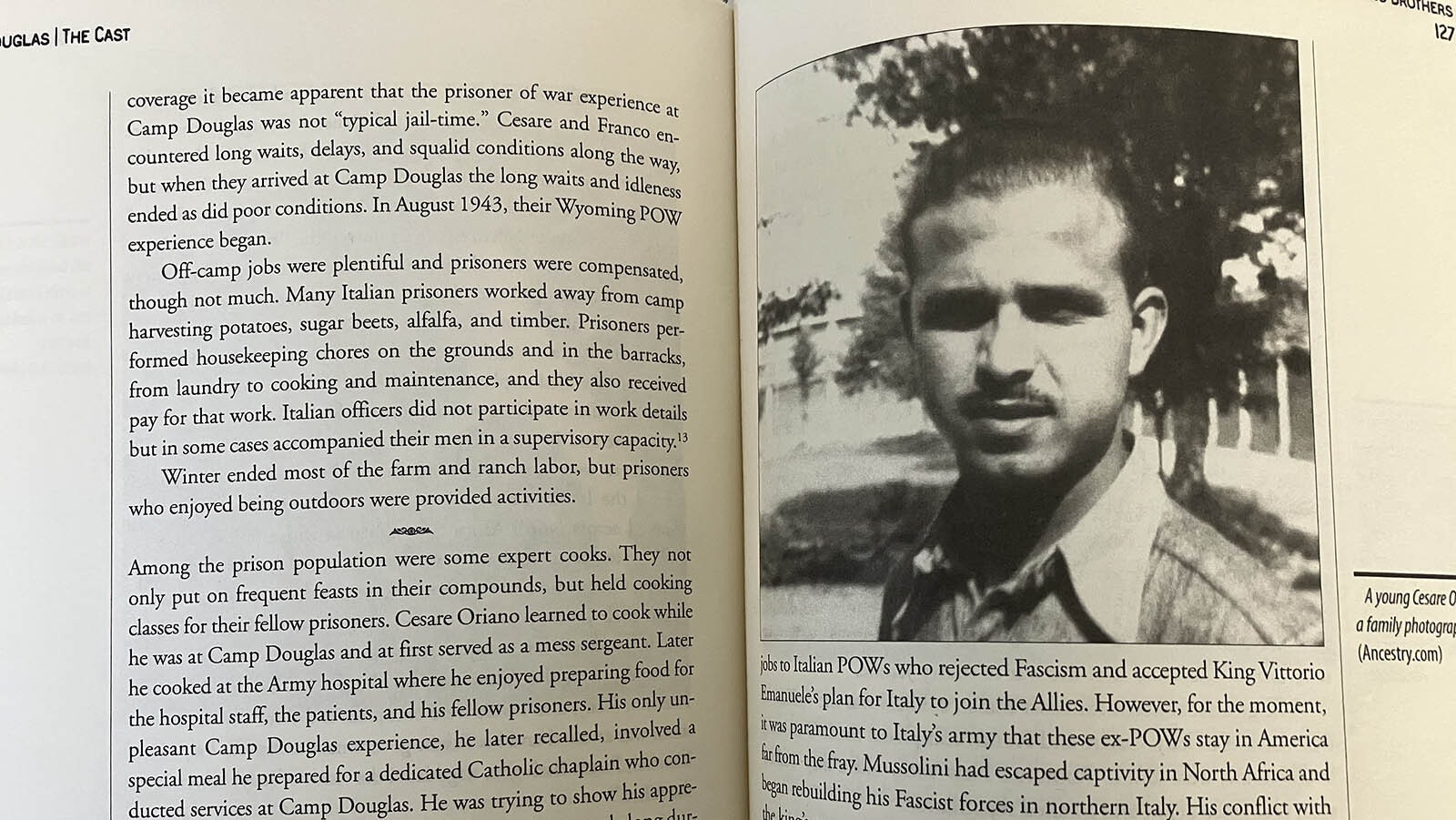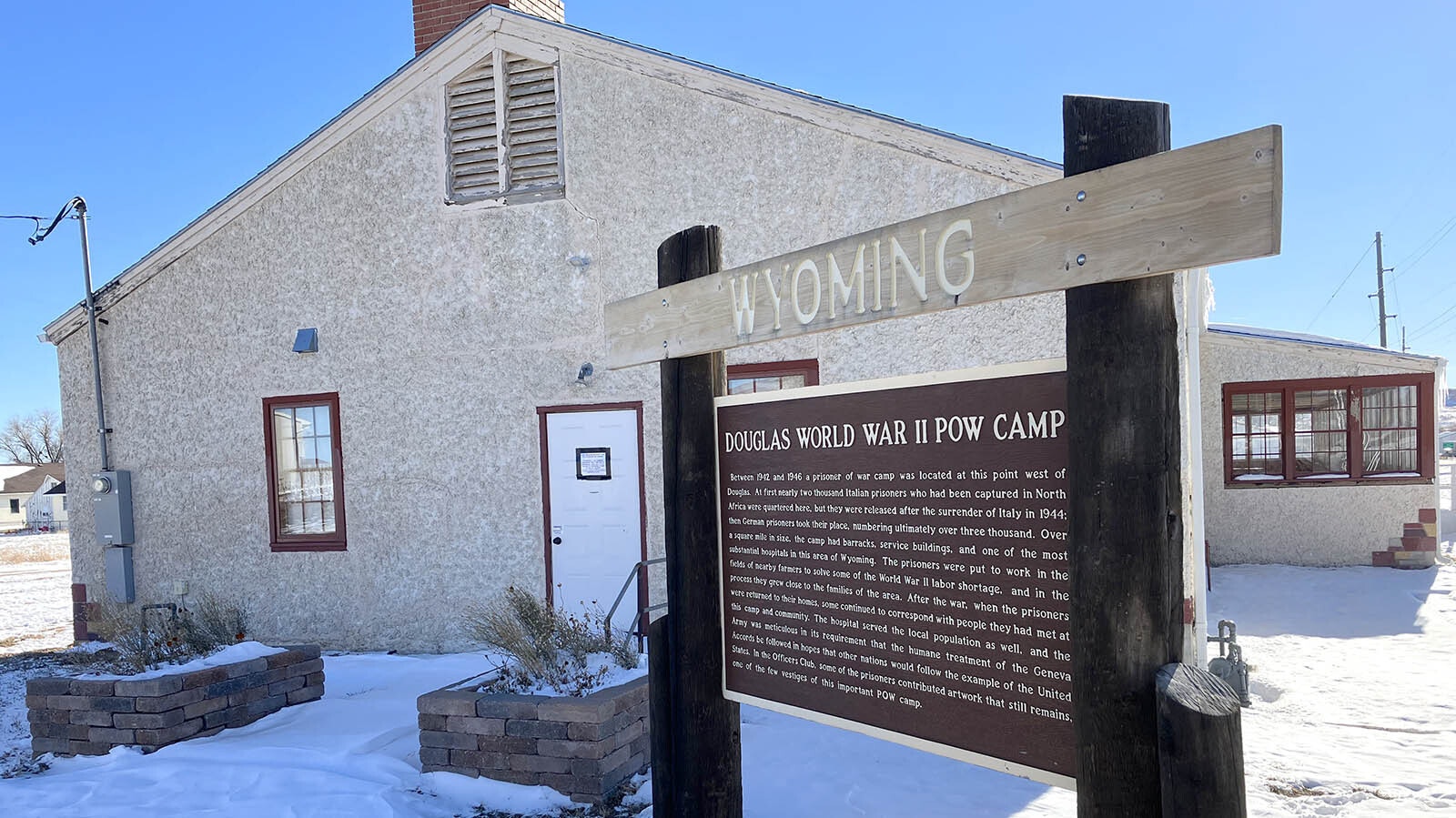DOUGLAS — Lee Ann Siebken was a 6-year-old living in Casper when trains bringing Italian prisoners of war from the allied North Africa campaign in World War II began arriving in Douglas in 1943.
She remembers going to what was the former POW officers’ quarters as a teenager for dances and other events.
But in later years as a resident of Douglas. where she moved with her husband in 1962, Siebken began interviewing those still alive with first-hand experiences associated with the camp as well as digging into newspaper files and other research.
Her conclusion is that the Italian, and later the German, prisoners helped with agricultural efforts around the region to harvest crops and keep the local economy alive.
“It was huge,” Siebken said, adding that with the POWs, “the ranchers had men to work for them because all their kids were gone off to war. And the community and whole economy of the community came back because we had all those people.
“And it was the quality of the people who were living there — generals and captains and military people. You think of prisoner of war camp and you think of thugs and thieves. That isn’t what it was like.”
‘Camp Douglas’
In her 191-page book “Camp Douglas” Siebken reveals that Italian and German prisoners who spent time at the camp and on ranches across the state were treated a whole lot better than American GIs captured behind enemy lines in Europe or the islands of the Pacific by Japan.
One former Italian POW snuck back into the country after the war to marry a woman he met in Cheyenne.
Sitting at her table in a home on the north side of Douglas, Siebken recalls a Douglas resident asking her many years ago to write a book about the camp. It took her six years to compile her notes and interviews and get it all on paper.
“I did a lot of interviews,” she said. “I like to do the research, to quiz people.”
She pulls CDs out of a box on her dining room table that contain interviews of those who have died. The book chronicles everything from the creation of the camp, which included 180 buildings put up in just 95 days, to the temporary shutdown of the camp when Italian POWs melted away from the community following a change in their status. And then there was the arrival of German prisoners in 1944 after the D-Day invasion.
There are chapters devoted to various local and state people who played significant roles as well tidbits of history from the events in Washington, D.C., and across the seas that impacted life on the ground in Douglas.

POWs Make $4 Per Day
In the book, Siebken writes about a 2013 interview with Douglas resident Jim Willox who recalled how German prisoners came to dig a sewer pipe trench for his dad in 1945 at the family ranch and received $4 a day.
One chapter features Capt. Michael Cedar, who served at the camp and for whom a park is named in Casper. He also was the uncle of Siebken’s husband. Another chapter shares the story of a 19-year-old nurse who arrived at the camp and six months later married a 33-year-old captain.
Still another focuses on three Italian brothers.
One brother, Cesare Oriano, was assigned to the staff of famous German Field Marshal Erwin Rommel in North Africa, and after capture arrived with the other Italians in 1943.
He served as a cook at the camp, and then after the Italian fascist leader Benito Mussolini was arrested and King Vittorio Emanuele came to power, was given the opportunity with other Italian POWs to renounce fascism and join Italian Service Units. These units performed nonmilitary work in the U.S. until they could be repatriated into the Italian Army at the end of the war.
Cesare used his opportunity at Camp Douglas to learn English. And while at Camp Warren in Cheyenne and training for the Italian Service Unit, he met an Italian girl in the community. After his training, Cesare was sent to work in New York.
But after the war, Siebken writes that although he was sent back to Italy, he snuck back across the ocean on a ship posing as a photographer and claiming to be the nephew of his future father-in-law. In November 1946, he married his love in Cheyenne, where they stayed to raise children and live the American dream.
Spread Out
A strong emphasis of the book is on the help the POWs provided across the state. There is a list of all the satellite camps that operated under the umbrella of Camp Douglas where prisoners provided help harvesting, logging and more. Among the sites were camps in Basin, Lovell, Riverton and Wheatland.
Prisoners were guarded by the U.S Army, fed by the Army and were paid by ranchers or businesses. In mid-October 1943, 1,035 Italian POWs were employed across Wyoming.
“Productivity exceeded everyone’s expectations as the 1943 crop numbers were reported,” she writes. “Newspapers from Cheyenne to Sheridan and from River to Scottsbluff reported the success of the fall harvest by Camp Douglas prisoners.”
Legacy Of Murals
A legacy of those Italian prisoners remains in Douglas through the 16 murals that talented artists among them painted on the walls of the then officer’s club. The building is now a state historic site.
The new book is not the 86-year-old’s first. She published a book years ago on the history of her church and another Wyoming history book, “Talk of the Town: Douglas, Wyoming — A Frontier Town’s True Story” for elementary students.
“Camp Douglas” is published by High Plains Press in Glendo, Wyoming, and High Plains founder and owner Nancy Curtis calls Siebken a friend of many years. Curtis helped edit and organize the chapters.
The book is available on the High Plains website, at local bookstores and on Amazon.
In addition to history, Siebken also writes poetry. She said her first published writing was her fourth-grade poem on Abraham Lincoln that was included in Lynne Cheney’s memoir “Blue Skies, No Fences.” They grew up together in Casper.
Now that the “Camp Douglas” book is complete, does she have any other writing projects in mind?
“I’m writing a story about Sir Barton, the triple-crown winner,” she said. “There is a statue of him in the park.”
Dale Killingbeck can be reached at dale@cowboystatedaily.com.










